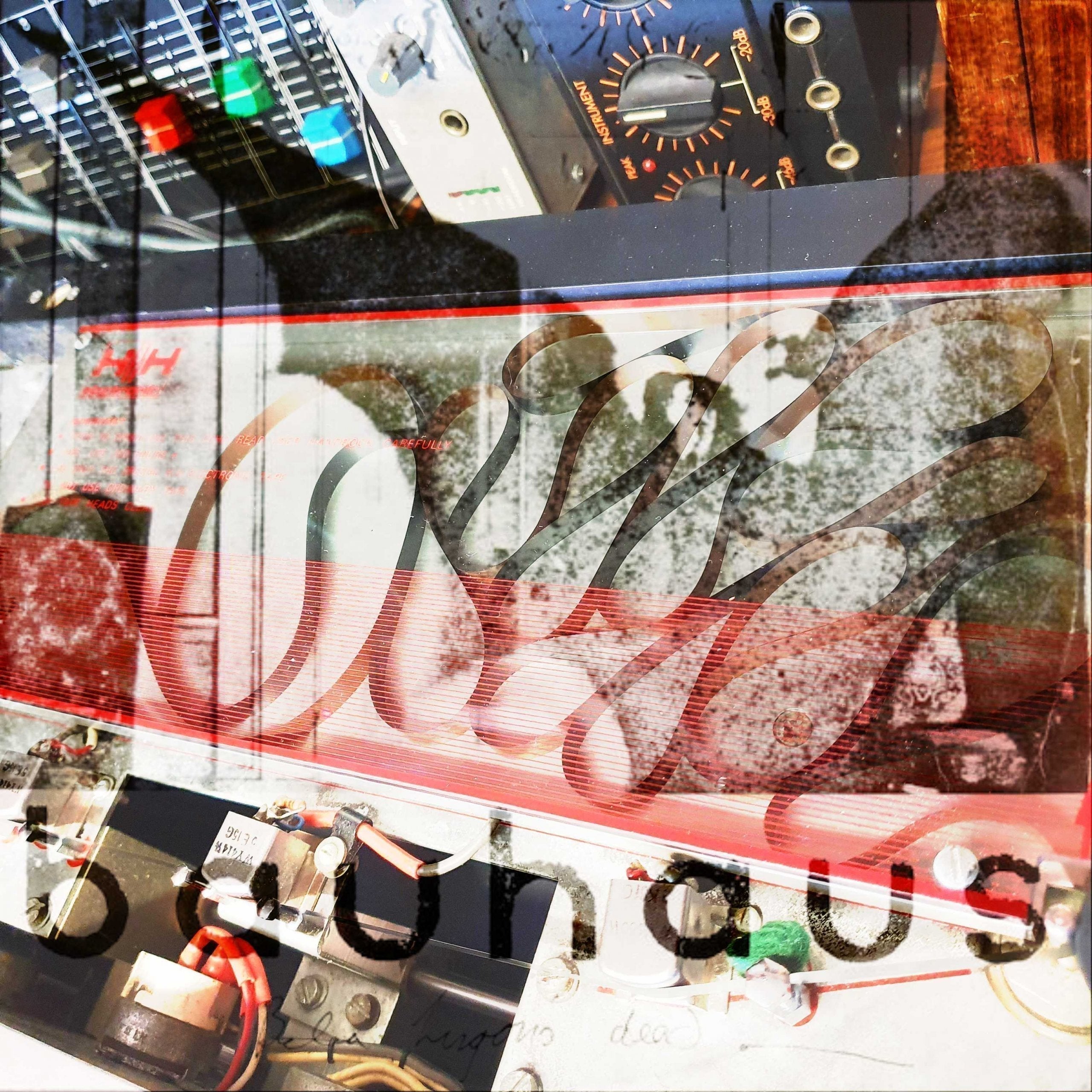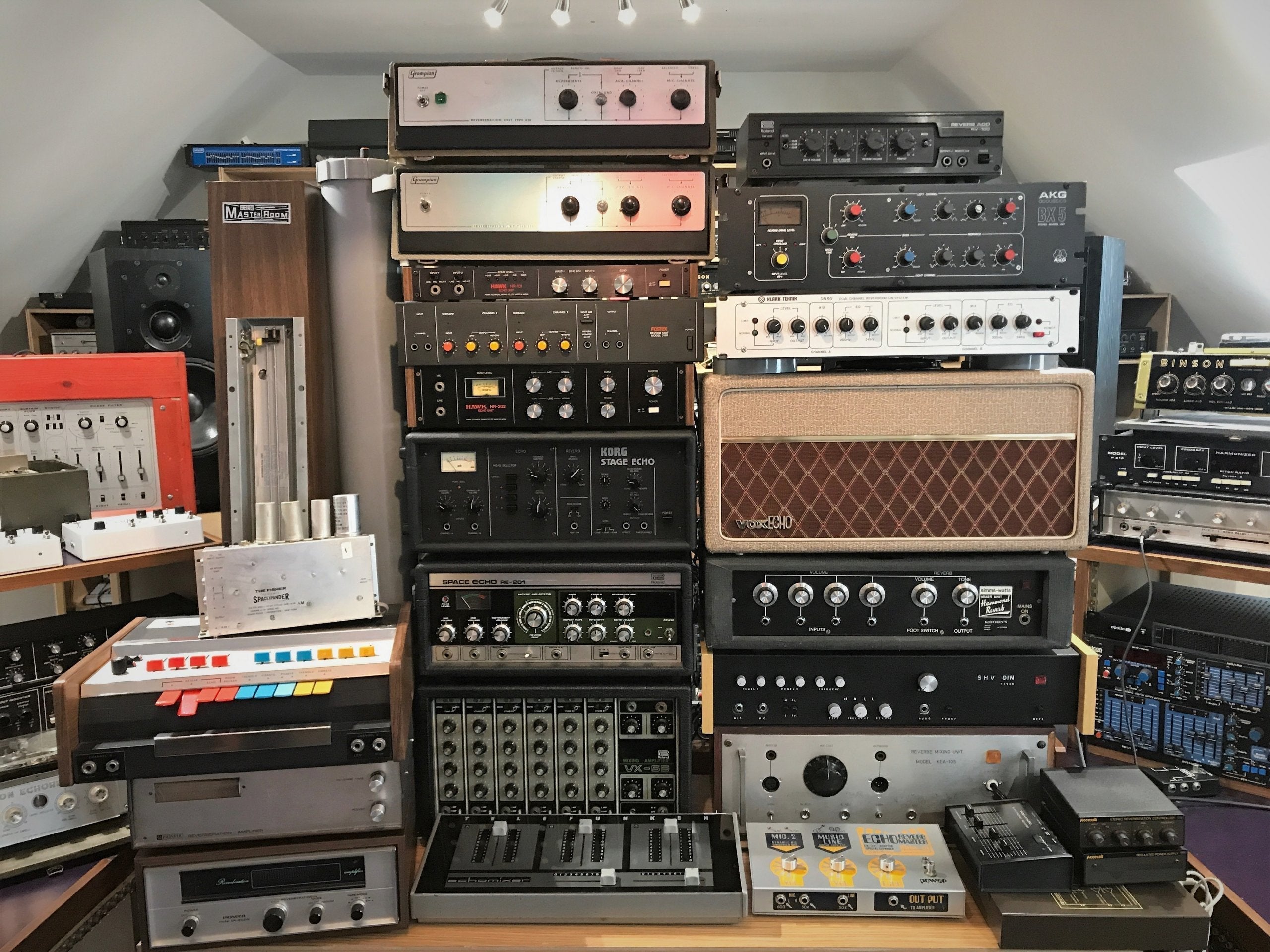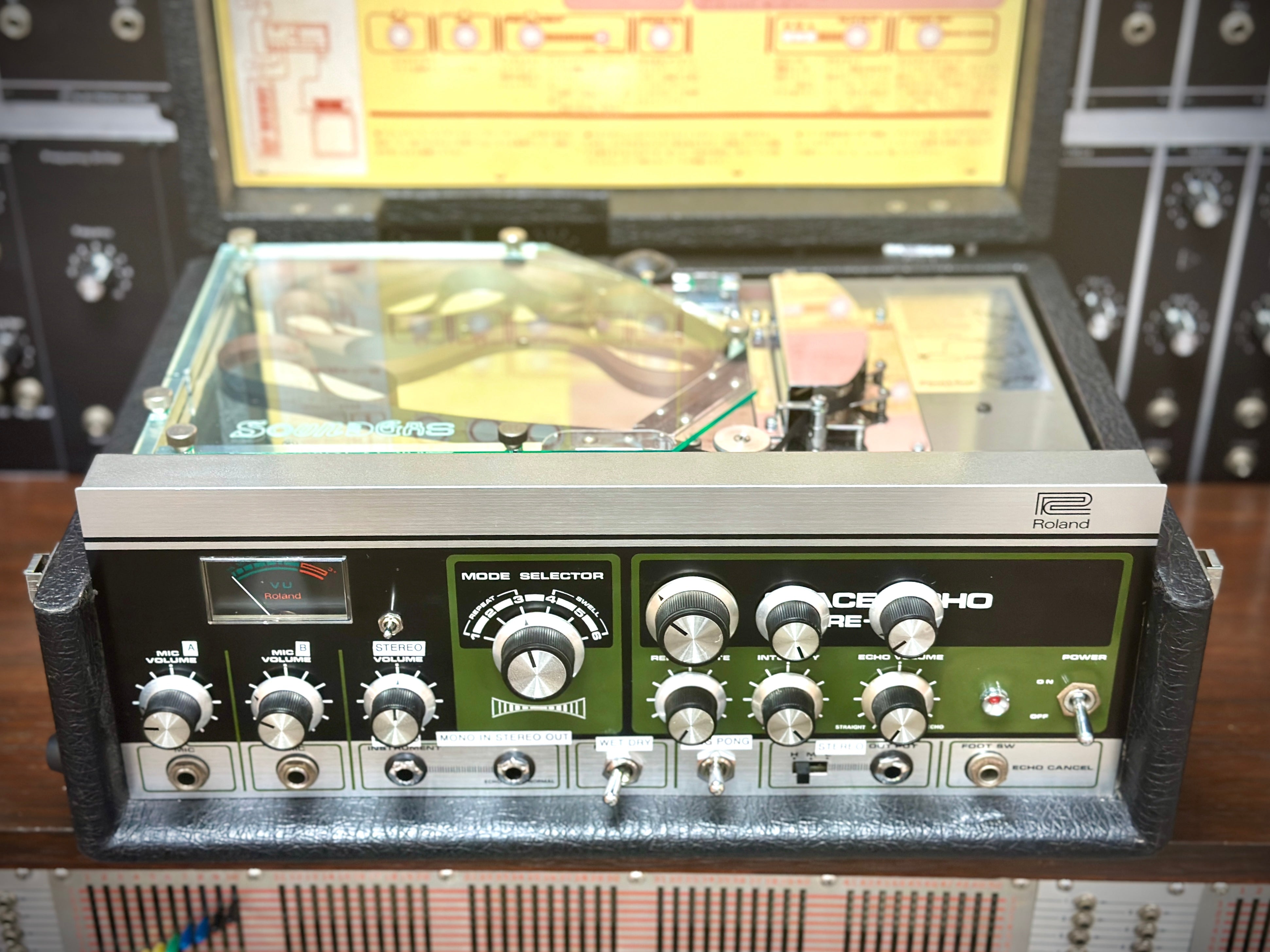
What's Your Favourite (Single Head) Tape Echo?
The HH Slider Echo: A Dub-Soaked, Proto-Goth Revelation

"It wasn’t Lee Perry or King Tubby that triggered my obsession with tape echo – it was a proto-goth 12-inch single from Northampton."
When asked which is the best tape echo, I usually deflect with a question of my own – “single or multi-head?” – a cunning ruse that allows me to sneak in multiple answers (ignoring Binson Echorecs which, as they record to a wire-wrapped metal drum, are not technically tape echoes). I can give myself more options by asking the further question: “valve or solid state?” which permits the inclusion of my beloved, if somewhat mechanically agricultural, Echoplex EP-2.

“Only a brave soul – or total tone obsessive – would consider touring with an EP-2.”
[Echo nerd digression: I am very aware that much internet 'wisdom' insists that the later solid state EP3 and EP4 are superior tonally and have a 'better' preamp. In my view, this is mostly because some very famous guitarists called Jimmy and Eddie employed them on some very famous recordings by their respective popular beat combos, Led Zeppelin (though Jimmy Page continued to use his Binson Echorec well into the seventies – famously applying it to John Bonham's drums to help create one of the greatest drum breaks of all time on When The Levee Breaks) and Van Halen. In many ways the EP3/4 were an improvement over the earlier valve/tube units, offering lower noise floor and greater mechanical reliability, but tonally a good EP1/2 is exponentially more betterer (technical term). Only a brave soul (or total tone obsessive) would consider touring with an EP-2 as Mason Stoops did recently on the Lizzy McAlpine tour to promote her album Older, which he both produced and gathered together a fine group of players for the recording sessions. Mason is a guitar player who knows more about tone than most and he and I are in complete agreement about the merits of an EP-2.]

Back to the question, if you press me to name my favourite single-head tape echo, then I have to name the HH Slider Echo (long loop version) for its joyous tactile and dubtastic playability. Being quite a finicky machine, and made in the UK in relatively small numbers, most have been hammered by sound systems, toured by live sound engineers, or housed in smoky studios, so are not easy to find in any condition, and rarely in reliable order. A staple of UK sound system culture, and championed most famously by Jah Shaka, they are rightly revered for their (at the time) rugged simplicity combined with characterful sound and easy playability. Unfortunately, their enduring popularity and hard use means few survive in good operational shape today. The lack of tape loops made from the correct formulation means many are now running well below par.
Made in Cambridge, Dubbed in Eternity
HH Electronics, founded in Cambridge in the 1960s, gained popularity among British musicians with their solid-state amps – Marc Bolan of T. Rex being a notable user. Their range of tape echoes included the single-head Slider Echo (produced in both short and long loop versions) and the Multi Echo, which featured multiple playback heads. HH eventually moved into digital delays (early so-called digital delays were in fact BBD-based units) before the brand was acquired by Laney Amplification in the 1990s. The name lives on, but sadly the slider echoes do not.
“The long loop version lets you get lost in dub space without the splice interrupting every few seconds.”
What’s the difference between the short and long loop Slider Echo? The long loop version uses a tray-mounted free-running tape similar to a Roland RE-201 Space Echo, while the short loop version is closer in design to a Watkins Copicat.
Both can sound excellent, but I much prefer the long loop for two key reasons: firstly the splice doesn't pass over the heads as regularly (so you’re not constantly reminded you’re looping a finite strip of tape), so allowing longer, more immersive feedback trails. Secondly, as with the Roland tape echoes, the longer loop both lasts much longer and is generally more reliable. I can't remember the last time I changed the tape in mine (which reminds me it's overdue!). I can very quickly lose myself in its cosmic dub oscillations without the splice interrupting the mood every few seconds (as with a short loop machine). There is also considerable visual appeal to the mesmerising movement of the long tape loop coiling hypnotically beneath the glass (social media seems to agree!).
A Tape Loop with Teeth
The HH Slider Echo is very choosy about tape loops (the short loop version especially so). Rather than pulling tape through the transport like most machines, the HH design pushes it – which makes it far more sensitive to loop quality. Most modern aftermarket loops (which are typically too thin) can cause transport issues and foul regularly. The original HH loop formulation used thicker tape stock, but we’ve found that our Soundgas Space Echo replacement loops can be made to work reliably with the right calibration.
“Slider Echoes are deeply idiosyncratic machines—rewarding, frustrating, and completely addictive.”
Bela Lugosi’s Echo
For a machine so steeped in sound system culture, it's slightly incongruous that the most well known recorded use of the HH Slider Echo is probably “Bela Lugosi’s Dead” by Bauhaus. Growing up in rural England in the seventies, it wasn’t Lee Perry or King Tubby that triggered my obsession with dub and tape echo – it was this 12" single on Rough Trade Records with its extended intro of sparse drum beats that echo and scatter for what seems like an eternity before the guitars are given similar treatment. The sonic textures and rhythms of those disembodied, decaying echoes on the snare and guitar were a major influence (along with The Clash and Mikey Dread's dubbed out B-sides) and set me on a lifelong path of echo exploration. It was decades later and long after I'd already fallen for the HH Slider Echo that I learned it was the same machine Daniel Ash used on Bela Lugosi.
Ash is quoted in Uncut magazine (noting the less than reliable nature of a well-used Slider Echo):
“Then we went into the control room and David had this old HH echo unit, which would crap out on you all the time. We hooked up the guitar and snare drum to this echo unit and I was just sliding the HH amp thing to trigger all these echoes as the song went through.”
It was clunky, unreliable, but utterly magical. This living and supremely tactile echo offers a sound sculpting experience that allows you to shape and rework music in real time in a way that was not at all common in the pre-digital era of recording. No wonder that record sounded so good to me: it still sounds as fresh and beguiling today as it ever did.

Echoes Endlessly Returning

The only tape echo in our first studio was a Melos – a cheap and cheerful (when it deigned to function) unit that used a tiny cartridge of tape. It was woefully underwhelming compared to the recorded sounds I sought to emulate, but from that point, I was hooked. Copicats followed, which are a delight to this day – the level of abuse and experimentation they will endure is heroic – it was my first experience of being able to manually mess with the tape speed by pressing on the capstan, and the feedback was at last more dub-like than the Melos though the quality from our tired machine with less than great loops was still lacking.

Then followed Roland RE-201 Space Echoes, none of which ever seemed to work (this was the early 90s so most had already had very hard lives). I ended up acquiring a pristine Roland RE-501 Chorus Echo which at last was reliable and offered superlative fidelity compared to what had gone before.

Thence, thanks initially to Loot magazine and the small ads section of local papers and Sound On Sound (and latterly the nascent eBay), my echo education expanded finally into the hallowed realms of the rare and exotic: Binsons, Klemts, Dynacords, and beyond. At one point, my Nottingham studio housed over 25 different echo units, many of which were highly prized – not despite, but because of – their idiosyncrasies and operational faults.
“The HH Slider Echo remains at the heart of my personal holy trinity of tape echoes.”
After approaching four decades of tape (and all other types of) echo exploration, I’m still discovering new (to me) machines and new sounds/techniques that can be achieved.
[Echo nerd digression 2: it's only comparatively recently that I 'discovered' how to turn a tape echo into a looper by switching out the erase head (or with some units, simply placing a piece of card between the erase head and tape).]
But the HH Slider Echo, which introduced me to the sonic joys of live dub mixing back in 1979, remains at the heart of my personal holy trinity of tape echoes (Roland RE-201, HH Slider, Echoplex EP-2). Yes it has flaws and quirks and limitations (and can be demanding of technical support), but its depth of character, potential for sonic experimentation, and utterly glorious hands-on playability still excite and inspire me every time I use mine.
🎧 Watch: HH Slider Echo in Action
🔊 Dub Echo Demo: HH Slider Echo meets Scientist
📺 Watch on YouTube – over 1.1 million views on Facebook!
Slider Echo re-dubbing a classic Scientist cut – live feedback manipulation in real time.









